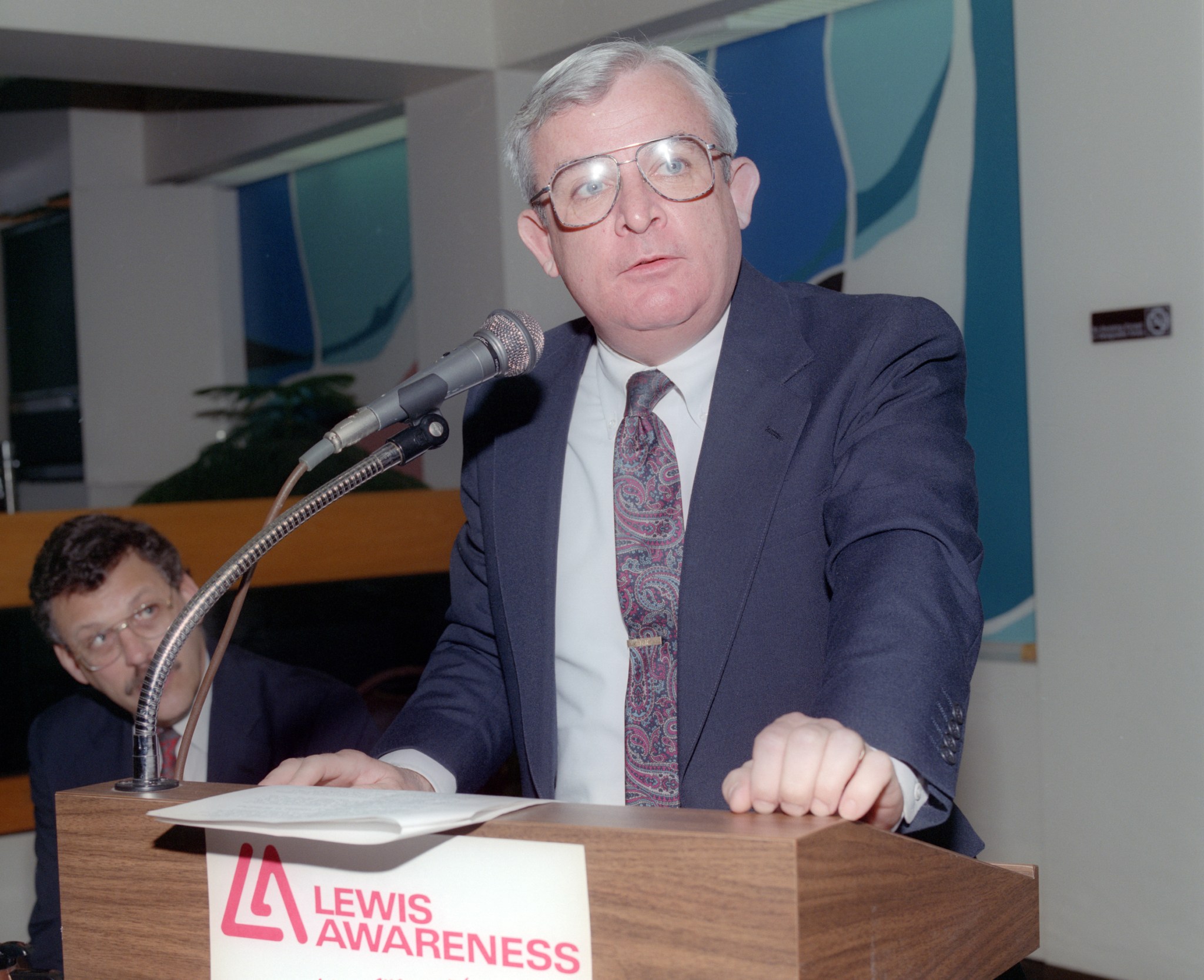
Lawrence J. Ross
Former Director, Glenn Research Center (Jul. 1990–Mar. 1994)
Lawrence J. Ross was center director at NASA’s Lewis Research Center (today, NASA’s Glenn Research Center) from July 1, 1990 until March 1, 1994. The center was more prosperous during that period than at any point since the late 1960s. Its annual budget exceeded $1 billion for the first time ever, over 200 new civil servants were hired, and the facilities at Plum Brook Station (today, NASA’s Neil Armstrong Test Facility) were reactivated. Ross had over 25 years of experience with launch vehicles prior to becoming center director.
While growing up in New York City, Ross built a short-wave radio that allowed him to have weekly discussions with another operator in California. The experience spurred an interest in electronics and led to Ross’ earning his electrical engineering degree from Manhattan College in 1963.
Ross joined NASA Lewis immediately afterwards as part of the agency’s hiring boom in the early 1960s. He began his career as a test engineer in the Centaur Program. Ross was responsible for testing the electronics of the Centaur in a large space simulation chamber. NASA Lewis was given responsibility for the Centaur upper-stage rocket in 1962. NASA was relying on the vehicle to send the Surveyor spacecraft to the Moon to examine landing sites for the Apollo program.
Ross subsequently managed the center’s support for the Atlas/Centaur launch of the Orbiting Astronomical Observatory, the Titan/Centaur’s proof flight, the Helios missions, and the Viking spacecraft in the mid-1970s. Ross was promoted through a series of positions with increased responsibilities: chief of the Vehicles Engineering Division in 1976, director of the Launch Vehicles Directorate in 1978, and director of Space Flight Systems in 1980. The latter role included supervision of Atlas/Centaur launches and development of the Advanced Communications Technology Satellite (ACTS). It was during this period that NASA began commercializing launch services and explored integrating Centaur into the space shuttle.
In September 1987, Center Director John Klineberg selected Ross to serve as his deputy director. Though hesitant to give up launch vehicle responsibilities, Ross accepted the role and began managing the general operations, facilities, and staff for the entire center.
In April 1990, NASA announced that Ross would replace the departing Klineberg on July 1, 1990. Ross inherited a healthy center and a new agency plan to return humans to Moon. Although funding for this Space Exploration Initiative soon fell through, it led to new Lewis efforts such as nuclear propulsion and in-space cryogenic fuel transfers.
Ross also oversaw several projects begun by his predecessor, including bringing the facilities at Plum Brook Station back online, breaking ground for the Ohio Aerospace Institute, and carrying out a series of events for the center’s 50th anniversary.
Ross spearheaded the development of a strategic plan for the 1990s, introduced the agency’s Total Quality initiative, and established an executive council of senior leaders to make key decisions affecting the overall center. Ross also expanded the center’s Ombudsman Program, introduced a regular column in the newsletter, and frequently had lunch with individual employees.
During the early 1990s, the center developed technologies for the proposed National Aerospace Plane (NASP), launched the ACTS satellite, and expanded its microgravity research capabilities. Lewis authors published more technical reports in 1990 and 1991 than at any point since 1974.
Ross tenure as center director also saw the breakup of the Soviet Union, and the transformation of the proposed Space Station Freedom into the International Space Station. Although the transformation led to the termination of Lewis’ work on the station’s electrical power system, the center became the agency’s lead interface with Russian counterparts as they became partners with the station and contributed to the power system for the Mir space station.
In January 1994, the administrator transferred Ross to NASA Headquarters effort to establish a new national wind tunnel complex. His last day at the center was March 1, 1994. The following year Ross was asked to lead the agency’s Continual Improvement role. He remained active after his retirement, undertaking consulting and review board work. In the early 2000s, Ross and former colleague Joseph Nieberding founded Aerospace Engineering Associates LLC and began a second career presenting a lessons-learned class based on their launch vehicles experiences.
Ross’s recognitions include the NASA Exceptional Service Medal (1975), the NASA Medal for Outstanding Leadership, and two Presidential Rank Award of Meritorious Executive in the Senior Executive Service (1981 and 1989).
































